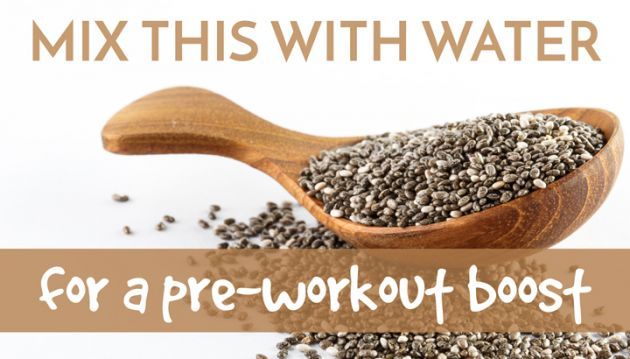Working out is an important part of a healthy lifestyle, providing strength, endurance, flexibility and support to your heart and lungs. But in order to support quality workouts, you must provide your body with the fuel it needs for energy. Chia seed, the modern-day superfood, may be just what your body needs.
Here’s what you need to know about chia seeds
Chia seeds are naturally black or white in color and should not be brown. Brown seeds are young seeds that haven’t properly matured, which may result in fewer nutritional benefits and a bitter taste. Chia seeds have a long shelf life and will stay fresh for several years if stored in a cool, dry place.
While chia seeds may seem like a recent nutritional trend, in reality they’re actually one of the oldest forms of nutrition, and were a staple food for the Mayan and Aztec diet. In fact, ancient Aztec and Incan warriors even ate chia seeds for strength and stamina during battle.
Native to parts of Mexico and Guatemala, chia seeds are harvested from a flowering plant that belongs to the mint family known as Salvia hispanica. When added to liquid, these tiny gluten-free seeds can expand to hold about 10 times their dry weight. After absorbing the liquid, chia seeds swell into gel-like globules reminiscent of tapioca balls.
The right way to eat chia seeds
There’s a right way and a wrong way to eat chia seeds, and anyone who’s eaten them the wrong way can attest to the extreme discomfort that follows. In 2014 Women’s Health reported that a 39-year-old man swallowed a tablespoon of dry chia seeds and chased it with water. What followed was intense dysphagia (difficulty of swallowing.) Although the man suffered from asthma, seasonal allergies and had a medical history that included intermittent dysphagia to solids, it worsened considerably after he reportedly consumed the dry chia seeds alone, and then drank water.
The right way to enjoy chia seeds is to soak them in water or liquid first — overnight or at least 20 minutes — before consuming. The seeds develop a gelatinous coating, which is thought to move swiftly through the digestive tract. Add lemon or lime juice and a natural sweetener of your choice.
Some evidence suggests that eating ground chia seeds instead of whole seeds, allows significantly more ALA (the plant form of omega-3 fatty acids) to reach the bloodstream according to Tufts University Health & Nutrition Letter.
Why they work
Chia seeds are whole, raw food great for vegans, vegetarians and carnivores. It serves as a superfood, delivering loads of nutritional benefits with very few calories. Chia seeds are an excellent protein source, which makes them perfect for mixing with water or even adding to a protein shake pre-workout.
Chia seeds contain both soluble and insoluble fiber, meaning they’re great for digestion and regularity. They’re also rich in antioxidants, which boost immune support. These tiny seeds are also one of the most concentrated sources of omega-3 essential fatty acids.
Consuming chia seeds a few hours before a long, intense workout can help provide fat for fuel after the carbs burn off. You can even eat them during a prolonged activity like hiking or bicycling to really turn up your energy level.
Chia seeds will ramp up energy and endurance, prolong hydration, help maintain blood sugar balance and even assist in weight loss. No wonder it’s a pre-workout super food of choice!
— Katherine Marko

